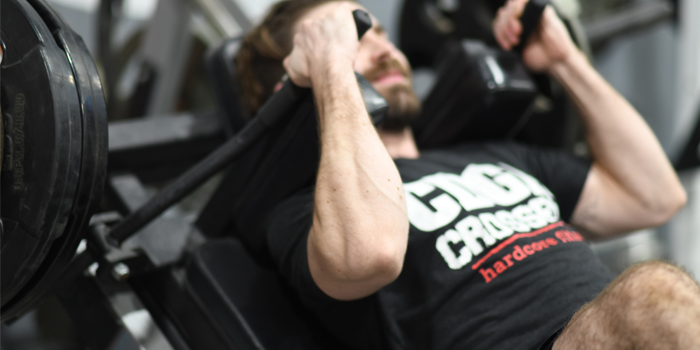
I am not the biggest expert out there concerning injury prevention. But, with that said, I never had a serious injury in my lifting career despite having lifted maximally each and every week and competing more frequently than any of my peers. I went full go for a decade. This proves that I am very lucky, or I know a thing or two. I'm not certain which. But it can't hurt to hear me out on this.
The most effective injury prevention that I know of is good technique! Nothing keeps you safer than doing things correctly. Mastering proper lifting form is a journey, and it develops over time. You must work diligently at it forever. You should adopt the attitude that you can always do better. But this is not easy and that is why we enlist coaches and experts to help us learn. They watch us with eagle eyes looking for ways to find improvement in our bar path and body position. It takes a team effort. That is a big job and can't be tackled in an article.
Therefore, I am going to offer the second-best option that I know of to prevent injury that does not require a coach or countless hours to master. You can do it all by yourself. It is a way of executing a repetition. A modality of training. A method of contracting a muscle. I refer to it as a smooth rep.
I will not confuse or bore you with the physics of an impact force and how to calculate it. You already know what it is by your general knowledge of watching the world bounce around. My primary example is of a tow chain between two cars. A car in front is connected to a car in the rear by a chain and begins to pull forward to tow the second car to the garage. If the car in front just guns the motor and takes off, the second car will receive quite a jolt. In fact, it might be so violent that the chain could snap. But if the first car slowly and smoothly pulls forward, gradually increasing the force, the slack in the chain is gradually taken up and the second car begins to follow behind with little trauma. There is a smooth transfer of force.
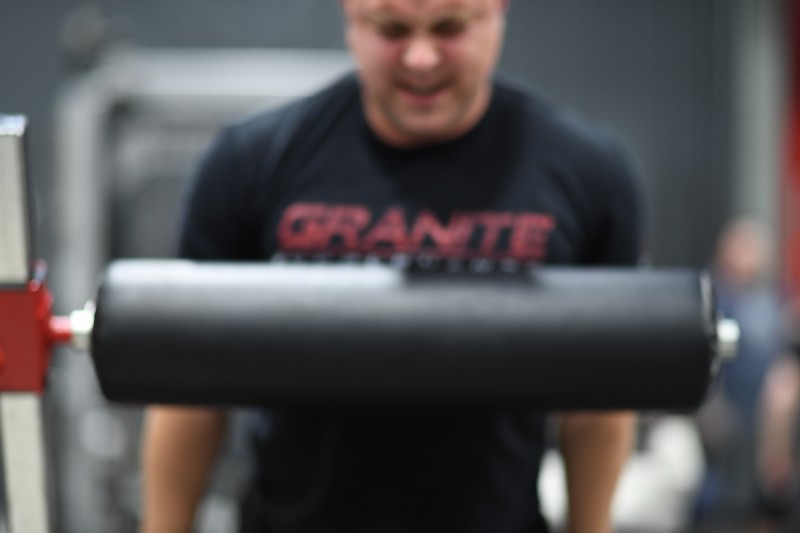
In the first example, the chain and the second car experience an impact force when the chain loses its slack and has no elastic capability to soften the blow. Thus the forces "crash" into the second car and jerk it forward. Even though they are connected, the resulting forces are just like if one object was thrown against another. An impact. In this case, the impact is internal to the system. You can't see the crash. But you can sure feel it! Don't be fooled because it is a "pull" instead of a "push." Physics sees the world much more simply than humans do! They are equivalent. It is a "crash" all the same.
In the second case, where one carefully and smoothly takes the slack out of the chain and gradually increases the force on the system, the car in the rear is gently pulled into motion and after the inertia is overcome, any amount of force can be delivered down the chain from the first car until they are speeding along the highway with the pedal to the metal! As long as it is done smoothly, the entire force from the first car's engine can be applied. The "crash" is avoided. But if one just floors it from the onset, there will be hell to pay down the line. You can check me on this by watching YouTube videos of people who fail to grasp this concept tearing the bumpers off their friends' cars...endlessly!
Just to belabor the point, the same holds true for a rocket during takeoff. The engines are capable of producing enough force on the system to break the spell of gravity and propel the ship into space. But think of how this occurs. The engines fire, and it seems to take forever to lift the ship. This is because if the full force were applied right away, the engines would simply rip right through the ship and fly away with the payload still on the pad in shambles. They must smoothly apply the force to avoid impacts through the system. They apply more and more force, and once the inertia is broken they can accelerate up to unbelievable speeds. Enormous amounts of force are then applied to the system. There is no lack of power or force! It is the way in which it is applied that allows the integrity of the ship to hold. Smooth is not weak!
There are countless other examples, but I hope you can anticipate where this is going. When you lift, you want to minimize impact forces and jerking the joints and tendons. You want to apply the force of contraction smoothly.
If you have ever seen a lifter deadlift by jerking the holy hell out of the bar, their back, their grip, their hair, and generally everything anywhere near them, you've seen what I'm talking about. You cringe when you see that. Not only does it waste energy, but it also stresses the joints more than necessary. Lifting is hard enough on our muscles, tendons, and joints as it is. We do not need to exacerbate it!
Let's shoot for an efficient, smooth contraction habit.
To understand just how deep this goes, let's review the structure of a muscle, tendon, and joint. At all these points, it is possible to lose tightness, and when transferring the forces through, to experience some impact or jerking. You can't feel them all, but they exist. And you can feel the sum total.
Starting at the microscopic level of muscle structure, the muscle filaments (actin and myosin) overlap one another and slide past each other in a ratcheting effect. The ends of the myofilaments are embedded in what is known as the Z line. The ratcheting of the filaments causes the Z lines on each end of the sarcomere to come closer to each other from the ends toward the middle. You can look it up. Very interesting.
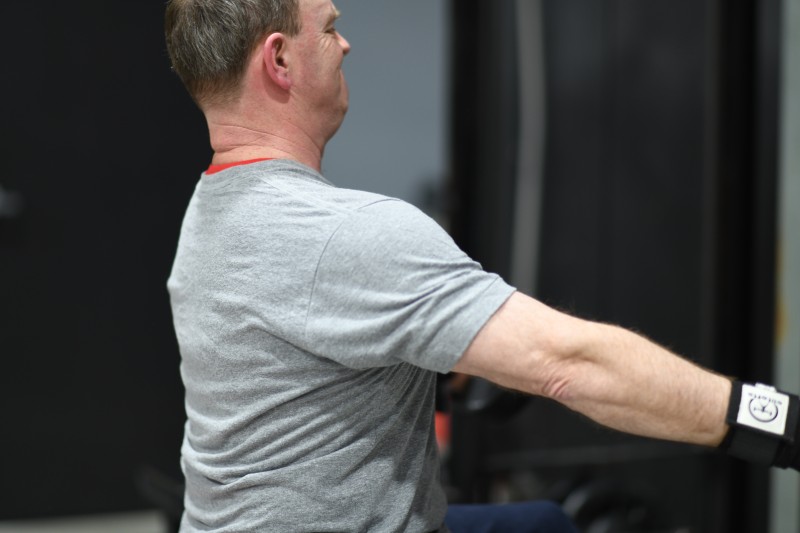
That is not the important part here for our discussion. What is important is that the muscle fiber is constructed of lots of Z lines with myofilaments in between them IN LONG LINES OF SARCOMERES like a chain of boxcars on a train. Each one contracts toward the center of its own two Z lines. The sarcomeres pull on each other, just like the train pulls on each car. AT EVERY SARCOMERE CONNECTION TO ANOTHER SARCOMERE THERE IS AN OPPORTUNITY FOR IMPACT FORCE. If you don't know the cellular structure of muscle fibers, it is hard to visualize since it is not exactly like a train engine that's pulling on the first boxcar, then the second, etc. It all happens simultaneously and toward the center of the muscle as opposed to along its length like a train would, BUT THE FORCES ARE THE SAME. What you can certainly feel is that as the boxcars of muscle sarcomeres pull on each other, the ends of the muscle attached to the bones by tendons come toward each other. You can feel this easily.
You can imagine a bunch of boxcars all in a line from one tendon to the other along a muscle. As they contract there is mechanical stress put on each one. This can occur with a jolt, a jerk, or smoothly and evenly. That is controllable. If there is slack between any of the sarcomeres, it can result in impact.
The tendons are next to feel the transfer of force. But this is a mere continuation of the aforementioned concept and does not need elaboration. This is the easiest to sense, and it is commonly referred to as joint stress. But it is really tendons.
Next are the joints themselves. It's hard to feel bones but follow the concept. By keeping the bones aligned and not wiggling or moving side to side, the transfer from the tendons is likely to be smoother. Sloppiness must not be tolerated. This is mechanics (again) and has much to do with technique. But holding the tendon and joint firm helps to maintain alignment. The synergistic muscles are implicated here. They support the prime movers to help stability. Staying tight is quite a bit about maintaining stability of the joint. You can't "tighten" bones. But rather you can tighten EVERYTHING around them and keep good alignment.
As you send the signal to contract to the muscle, you must maintain stability and tightness along the entire chain. No slack or laxity can be tolerated. It will result in impact. I know that you know this already and don't go from completely loosey-goosey to full-on flex. But you can do better. You can" tighten up" to a higher degree than that. This is to protect the joints, connective tissues, and muscles themselves from undue stress. You will have to recover from all the pounding you put on yourself. Why make it harder than it has to be because you are too lazy to tighten up?
There's more to it than that, but I am sure you get the idea. The gist is to tighten up and create a smoother contraction to lessen the total stress on the system and mitigate the need for recovery. This is a BIG SECRET to maximizing recovery. DON'T CREATE THE NEED FOR SO MUCH FROM THE BEGINNING!
I want to go over the way I teach the smoothing out of the repetition. We must pay the closest attention to the beginning of the rep and the reversal of the rep when it goes from stretched to contracted in a series of reps.
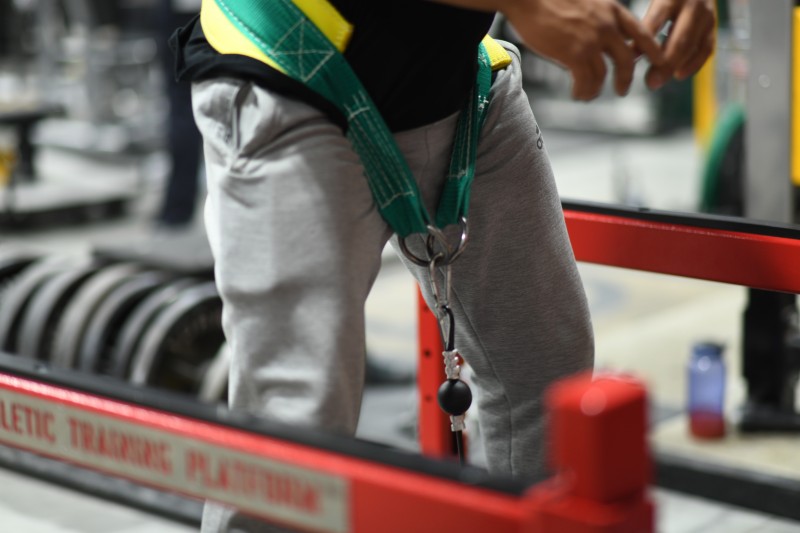
Starting with a biceps curl as an example, we will begin with the muscle stretched out in extension. Before you actually lift the weight and move the bar any distance at all, you should tense the muscle. You should at the same time tighten the joint. In your mind, you need to visualize this in a way that makes sense to you. But you can feel both things. Pay attention to them both. Before the arm moves at all, you should both tense the muscle and tighten the joint. You are taking the slack out of the system, first the sarcomeres, then the tendons, and then the joints. It is akin to the car tow chain hanging loosely between the two cars being pulled taut before the first car presses the pedal down in earnest.THEN you increase the tension up to full tilt. Once two things happen, you are free to hit the gas. ONE the slack is now pulled taut, and TWO the inertia is broken, and the weight just slightly begins to move. At this point, it is on!
At first, you will have to take your time and concentrate on this in succession. But after a very short time, it will become second nature to you. If you have been lifting for any length of time, you are already doing this to some extent. But I'm saying here that we must MAXIMIZE it. We have to fully tighten and fully tense the system before we move. Then we need to sense that the weight has broken inertia and has started to move. If you have not thought through this completely, you are not doing it maximally, and you have room to improve. You are probably doing OK, (you are not a beginner at this), but I'm insisting you do better still. I want you to do the very best that you can. Become an expert at it. Tighten up! Smooth it out!
Now we come to the part that the article was written for, the smooth, even acceleration of the movement. THIS IS NOT COMPENSATORY ACCELERATION AS YOU HAVE READ ABOUT. The mess that that idea has devolved into is way beyond the scope of what I am willing to drown in the misunderstanding of at this time. Keep this simple. Do not think about speed. Think about smoothness and the gentleness to the joints. You can learn to do this at any speed. The speed will come. Start slow, then build speed later. You can go insanely fast when you learn it.
But your mind must not be on speed at first. It must be on the even transfer of force to the bar. This happens through the force chain. Think of it as a chain that you don't want to jerk or heaven forbid, snap, and apply the exertion smoothly. This is not about power or speed. It is about transfer of force. You can adapt it to power training easily once you master it. It is about the application of force only. That can be done at very rapid rates. Stay concentrated on the avoidance of a jerk and the limitation of impact on your body. The power comes in time. I can not say this enough times. Once you feel the inertia break and the weight move, it is perfectly fine to apply as much force as you can humanly muster. You won't stress the joints any more than necessary. They will have been protected from any impact force and ONLY feel the weight, nothing additional to it. Go nuts!
In an attempt to increase speed, I am afraid people have forgotten about impact. This may or may not have led to unnecessary injury. When my joints got inflamed, it reminded me to revisit this idea and check myself on smoothness. Moving smoother might or might not mean moving slower, but it never means moving less weight. Never. The converse can not be said about moving faster. This is physics, not opinion.
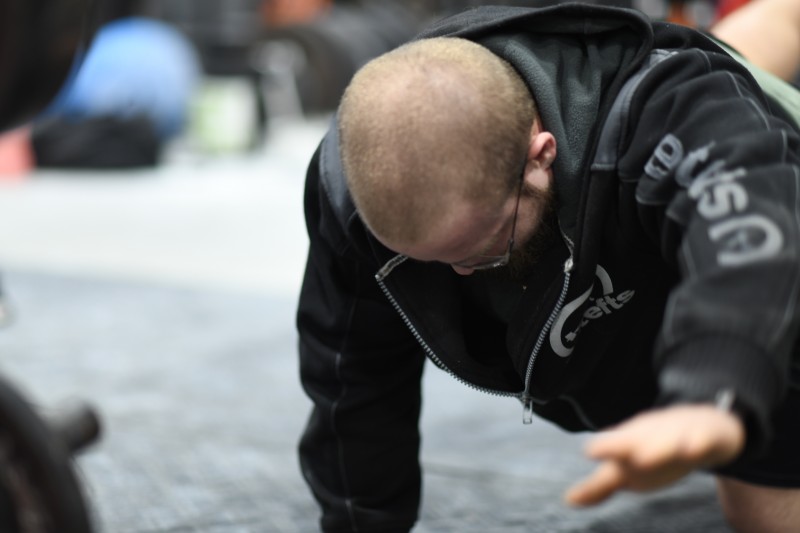
When you apply the maximum force your muscles are able to produce, but you want to move faster, you must decrease the weight. The more you lighten the load, the faster you can move it. The equation is FORCE = MASS x ACCELERATION. Both sides of the equals sign must add up. If we establish the force as a MAXIMUM VALUE THAT YOU CAN PRODUCE, then it can not change. It is all you have to give. It is already at maximum. There is no more than max. You can't just say that you will increase force to move more explosively. You don't have any more force. You are maxed out! You are going full go.
The other side of the equation has two variables which must equal that amount of force when multiplied. If we increase one, the other must compensate to keep the equation equal. So if speed (acceleration) goes up, mass (weight) must come down. This means that for any given force, we must choose between more speed or more weight. There is no way to add speed and keep the mass the same without also adding force. But with the force at the maximum we can muster, that is not an option. So to move faster we have to go lighter. These are NOT MY LAWS! If you want to argue about it, talk to Issac Newton or God. Let me know if they get back to you!
REPEAT: You have to choose. At max force, it is either more speed or more weight. If you choose more speed, you have to lower the weight. If you choose more weight, you must lower the speed.
I don't want to beat you over the head with math. But I want to assure you that there is nothing to worry about in losing your strength by contracting smoothly. You do not lighten the weight. You actually use heavier weight than if you worry about speed. To go fast, you have to use less weight, not more. The whole point of weightlifting competition is to find out who lifts the most, not who lifts the fastest. Right?
What people REALLY MEAN when they talk about speed training for max lifts is that you must TRY HARDER. They are talking about how they THINK about it, NOT how it actually happens in reality. They mistakenly talk about speed when what they are really after is force. They confuse speed with the production of force. This is understandable all the way up to maximal force. When you are maxed out (as in powerlifting using the highest weights possible), there just is no way to go faster. To do so would require more force. And with force production at a maximum already, that is a fairy tale. If you are maxed out in mass, you will be moving very, very, very slowly. Not my laws, folks. You can only speed up your reps with sub max weights. If you lift a lighter and lighter load, you can do it faster and faster. To a point where the other side of the equation catches up and for maximum speed, you can not LOWER the weight any further. You can not put negative pounds on a bar to go faster.
But I'm not talking about slow or fast, per se. I am concentrating on smoothness. That can happen fast. But to overemphasize speed, people have gotten out of control and sloppy. They jerk and they jolt. Especially on the turnaround. Especially on the reversal from stretch to contraction. They bounce. They swing. They heave. They do all the most dangerous things that first-year students of exercise are warned so incessantly about. It falls under the broad heading of "cheating." Or bad form.
After you get good at smoothness, you can work on speed if you choose. Protect your joints first, then address speed. I want you to get speed out of your mind to learn smoothness. Feel the force, not the speed. If you choose to ignore physics and believe that you are immune to the laws of the Universe and do "speed work" in an attempt to get strong, then fine, do so. But at least you will have done your joints a favor by learning to contract smoothly. The alternative of jerking and slamming and pounding your reps means a lot less of the wear and tear that cuts into recovery time, risks injury, and shortens careers. Even if you get only a tiny bit smoother, you are kinder to your body. IT CANNOT HURT!
So after the initial tensing and fixing the joint by tightening, you begin to progressively add more and more effort (like the rocket taking off) until you are screaming along in top gear. Giving it all you have to give. This is how you learn to smoothly apply force. It is essential to see that you are not producing less force by applying it smoothly. You are still putting all the force that you have into the contraction. But mechanically speaking, you are building it gradually (in milliseconds) instead of all at once. You DO NOT meter your force out through the entire distance of the rep to be at the greatest force at the end! Once the inertia of the weight is broken and it is moving (even the tiniest bit), you give it the best you have. The danger of impact is over once the inertia is broken. THIS ONLY APPLIES TO THE BEGINNING OF THE CONTRACTION, and to the reversal of the rep and return to the starting point...although the eccentric phase of contraction has different properties that we won't discuss here. We will stick to the lifting and not the lowering.
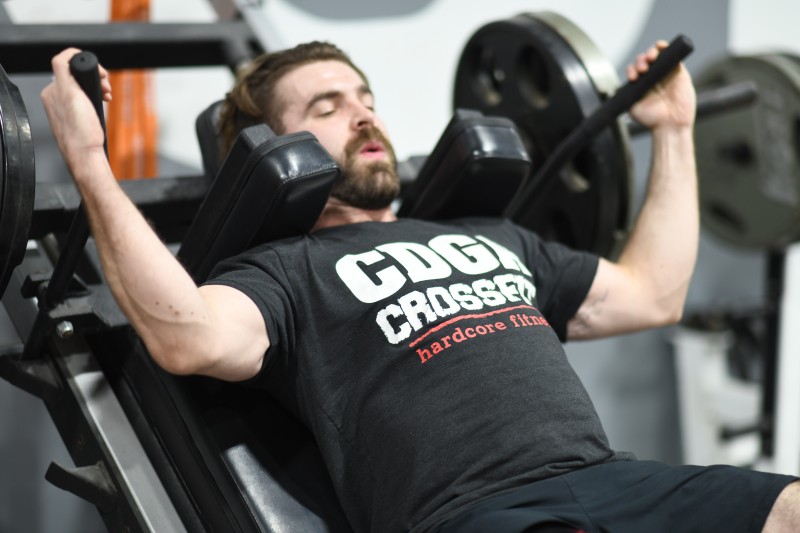
I understand the caveat here. It is subtle. There is the additional consideration of leverage and the building of momentum to get through the sticking point of the movement. There is a mechanical point in the range that is the most disadvantaged. We all recognize it as the sticking point, and it behooves us to have some momentum on the bar to ride it through that point. That is not a problem if you accelerate the bar once you have broken the inertia. I'm not saying to continue to move slow or less than maximally through the whole movement! I'm saying get to full go! But do that without a jerk or jolt. Do it smoothly! You still hit the sticking point at full go! You just don't have to be at full go at the point where the bar is at rest. If you do, there will of necessity be a big impact. You must still accelerate through the stick, but you accelerate smoothly, not violently from the start.
I hope you are not confused. Going smoothly to max effort still gets you to max effort! You are not holding back! You are learning to apply your full force in a manner that is easier on the system. Smooth is not weak or half-assed. It is how you apply the full force, not the lack of full force. It is the application of FULL FORCE gradually instead of out of the gate. The Navy SEALS have a saying..." Fast is slow and smooth is fast." I like that.
Until you buy into this idea, it might be worth trying it as a test on a supplemental exercise and see how it affects your recovery and joint and muscle soreness. Choose a simple exercise that you can keep track of in both strength and overtraining symptoms. Journal how you feel and compare that to how your strength is improving while using the smooth rep idea. Do your own study. Compare that to how other muscle groups and joints feel. I am predicting a noticeable difference. And I am predicting similar gains in strength. Let's see if I know what I'm talking about or not. You can always go back to jerking and slamming your body around if you'd like.
There is a learning curve to this. You have to try it for a reasonable amount of time. You won't notice it in a workout or two. But if you are serious about reaching your potential, avoiding injury, and maximizing recovery, here is an opportunity to explore something that not only follows science and physics but holds up to common sense as well. I'm betting your numbers will improve, and your body will thank you. If I am mistaken, at least one muscle group and joint got some R and R for a while. You have nothing to lose. That is, except a bunch of aching joints and some low totals!










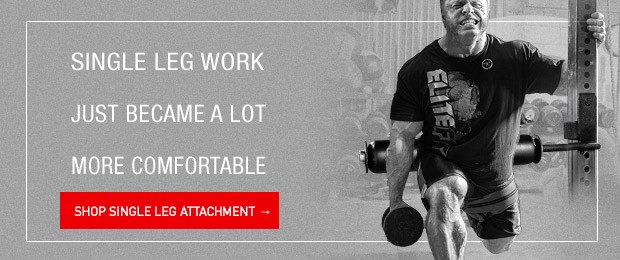
1 Comment